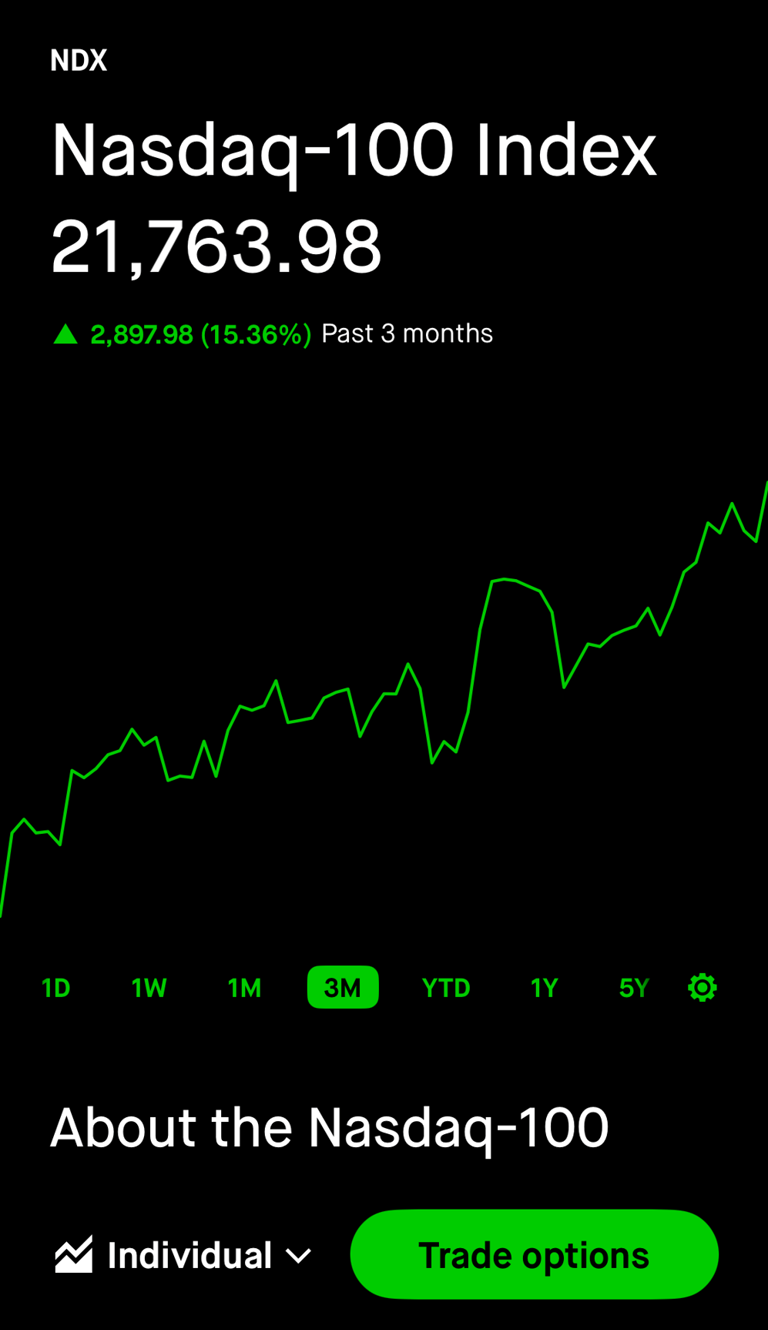
Click Here to Earn $5-200 In Free Stock!

Daniel Williams' 2025 Economic Outlook & Investing Tips
Discover Daniel Williams' insights on the economic outlook for 2025 and learn why now is the perfect time to invest. Stay ahead of market trends and make informed decisions for your financial future.
BUILDING WEALTH INVESTING
Daniel Williams
12/13/20246 min read



Investors Who Take the Leap
The journey of investing often reflects a series of calculated risks, where individuals and institutions assess market conditions to uncover potential opportunities. Within this landscape, there exist noteworthy success stories of investors who took the leap in harmony with Daniel Williams and they not only provide inspiration, these individuals also underscore the merits of foresight and strategic action in the investment realm.
On the institutional side, Dwillsprimetime® Corporation made a sizable investment in Crypto firms aligned with the growth initiative forecasted by Williams. Recognizing the shift towards Digital Currency, they diversified their portfolio with artificial intelligence stocks in early 2024, 10 months later the pivotal decision resulted in significant returns as the global demand for Ai soared.
Ultimately, whether through individual initiative or institutional strategy, these decisions illuminate the potential rewards of timely investments. By capitalizing on market trends heralded by experts like Daniel Williams, investors who dared to act decisively have seen the fruits of their labor manifest in remarkable financial growth.
Daniel Williams Economic Forecast
In the realm of economic analysis and market forecasting, few figures have garnered as much respect and attention as Daniel Williams. As a prominent economist, Williams has built a reputation for his astute insights into market trends and his ability to forecast economic conditions with a high degree of accuracy. His analytical approach blends extensive research with an understanding of macroeconomic fundamentals, making his predictions particularly noteworthy for investors and policymakers alike.
Given the current backdrop of unprecedented highs in the stock market, Williams' latest economic outlook for 2025 comes at a pivotal time. His bullish perspective suggests that the ongoing recovery from recent economic disruptions has positioned the market for continued growth in the coming years. Central to this optimistic forecast are several key factors, including projected GDP growth, improvements in consumer spending, and robust corporate earnings. Each of these elements plays a crucial role in shaping the anticipated economic landscape, providing a compelling narrative for potential investors.
Moreover, Williams emphasizes the significance of global economic dynamics, including shifts in trade policies and international market behavior, which could further influence investment opportunities. His heartfelt belief in the potential for long-term prosperity is underpinned by historical precedents and current data trends. As we delve deeper into the specifics of his forecast, it becomes essential for potential investors to understand not only the context of this economic outlook but also the strategies that can be employed to capitalize on it.
By synthesizing Williams' insights with a thorough understanding of the prevailing market conditions, investors can make informed decisions that align with the anticipated trends of 2025. This guidance will serve as a foundation for exploring how the current economic signals can translate into fruitful investment opportunities in the near future.
Current Stock Market Trends
As we approach the end of 2023, the stock market has been exhibiting a notable series of all-time highs. Weekly reports consistently highlight this bullish trend, which has captured the attention of both seasoned investors and newcomers alike. The current market environment is shaped by a variety of factors, each contributing to the overarching optimism evident in stock performance.
Investor sentiment plays a crucial role in driving market trends. Presently, there exists a strong belief in economic recovery and growth, bolstered by positive corporate earnings and stable economic indicators. For instance, recent data reveals an encouraging rise in consumer spending, indicating a robust demand that fuels corporate revenue across sectors. Furthermore, low unemployment rates and steady job growth have instilled confidence among investors, contributing to increased capital inflow into the stock market.
Several economic indicators further validate the resilience of the market. The Federal Reserve's monetary policy remains accommodative, with interest rates held at historically low levels. This environment has led to a favorable atmosphere for borrowing and investment, encouraging businesses to expand and consumers to spend. As businesses thrive, stock prices surge, reflecting the underlying strength of the economy.
Furthermore, recent market events, including technological advancements and shifts in consumer behavior, have catalyzed growth across numerous industries. The surge in sectors such as renewable energy, technology, and healthcare can be attributed to both changing consumer preferences and long-term growth projections. A statistical analysis of stock performance over the past year reveals a significant upward trajectory, with many indices surpassing pre-pandemic levels, indicating a strong recovery and investor confidence.
Overall, the persistent all-time highs in the stock market are a reflection of both solid economic fundamentals and positive investor sentiment. As we look toward 2025, understanding these trends is essential for making informed investment decisions.
The Impact of Rate Cuts on Economic Growth
Rate cuts implemented by central banks are strategic tools aimed at stimulating economic activity by lowering borrowing costs. When central banks reduce interest rates, the immediate effect is generally a decrease in the expense associated with loans for individuals and businesses. This reduction encourages spending and investment, as cheaper loans make it more feasible for consumers to finance major purchases, such as homes and automobiles, and for businesses to invest in expansion or improve operations. Consequently, this increased spending and investment can contribute significantly to overall economic growth.
The relationship between interest rates and economic activity is well-documented in financial theories. Lower interest rates are often correlated with higher consumption and investment. This principle underpins the rationale behind monetary policy adjustments, as central banks believe that by lowering rates, they can stimulate demand and jumpstart economic growth. Furthermore, with diminished savings incentives due to lower returns, consumers are more likely to spend rather than save, thereby further invigorating the economy.
In the context of Daniel Williams’ optimistic economic outlook for 2025, the current trend of rate cuts plays a vital role. As central banks pivot to a more accommodative monetary policy, businesses are likely to find favorable conditions for expansion. This is particularly relevant for sectors that are capital intensive and rely on financing for growth. Consumers, on their part, may also benefit from reduced mortgage rates and other personal loan rates, leading to enhanced consumer confidence and increased discretionary spending.
Ultimately, the implications for both businesses and consumers of these rate cuts are profound. Companies can leverage lower interest rates for affordable financing, while consumers are encouraged to engage in spending, both of which are essential for long-term economic growth. Observing these dynamics will provide valuable insights into the potential recovery trajectory that aligns with Williams' projections for the near future.
Daniel Williams Advice for Investors In 2025
In the rapidly evolving economic landscape, Daniel Williams offers critical advice for investors poised to make strategic decisions as we look toward 2025. He emphasizes that the current market presents a plethora of opportunities, making it an opportune moment to invest rather than waiting for a potentially different scenario in the future. According to Williams, those who act now may benefit from appreciating assets and favorable conditions that could be less accessible later on.
Williams suggests investors adopt a diversified portfolio strategy, encompassing various asset classes, including stocks, bonds, and real estate. This diversification not only mitigates risk but also positions investors to capitalize on growth across multiple sectors. For instance, he notes the potential for technology and healthcare sectors to thrive given the ongoing advancements and increased demand for innovation. He encourages investors to stay informed about market trends and company performance within these industries to make educated decisions.
Additionally, Williams highlights the importance of embracing a long-term perspective when investing. While short-term fluctuations in the market may cause uncertainty, history shows that markets tend to rebound over time. Thus, he urges both novice and seasoned investors to remain patient through the volatility and focus on their long-term goals. Practical tips include setting clear investment objectives, conducting thorough research, and periodically reviewing portfolio allocations to ensure alignment with personal goals and risk tolerance.
Another salient point in Williams' advice is the consideration of alternative investments, such as commodities and cryptocurrencies. He posits that with global economic shifts, these assets may present unique growth opportunities that traditional investments might not offer. By maintaining a flexible approach, investors can navigate the complexities of the market more effectively and harness emerging trends early on.
Outlook for Economic Growth and Investment Opportunities
As we look toward the economic landscape of 2025, it is clear that preparation and proactive measures are essential for seizing upcoming opportunities. Daniel Williams' analysis highlights the potential for significant growth across various sectors, making it imperative for investors to develop a diversified strategy that aligns with emerging trends. The focus should be on sectors predicted to thrive, such as technology, renewable energy, and healthcare, each of which could play a pivotal role in shaping the future economy.
In recent discussions, multiple economic indicators signal a shift towards recovery and expansion. With factors like increased consumer spending, governmental support for innovation, and an emphasis on sustainable practices, the foundation for a robust economic environment appears strong. Therefore, engaging in timely investment decisions can yield substantial returns for those who remain vigilant in monitoring these trends. Individuals and institutions alike are encouraged to diversify their portfolios to mitigate risks while capitalizing on potential gains.
Readers are invited to reflect on their own investment strategies in light of these insights. Are your current investments aligned with the anticipated growth sectors? Do you have contingencies in place to adapt to shifting market dynamics? It may be beneficial to reassess your financial goals and consider how these evolving economic conditions might impact your plans. Embracing a forward-thinking mindset will be crucial as markets evolve and new opportunities arise.
In conclusion, those who take the initiative to prepare now and remain adaptable will likely find themselves well-positioned for the opportunities on the horizon in 2025. By staying informed and proactive, investors can not only navigate potential challenges but also capitalize on the growth that lies ahead. The time to invest is now, and the potential rewards could be significant for those who choose to act decisively.
